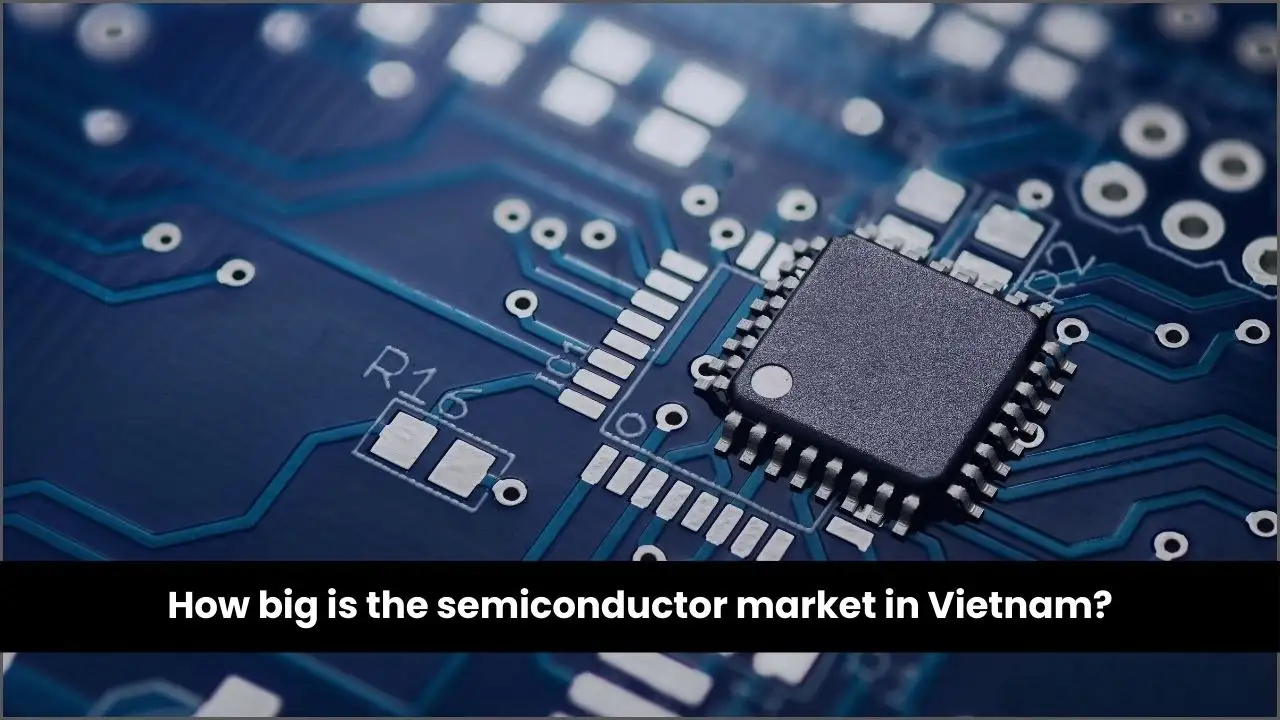How Big is the Semiconductor Market in Vietnam?
13-Aug-2025
The Vietnam semiconductor market revenue reached USD 7.03 Billion in 2024 and is projected to generate a revenue of USD 16.64 Billion by 2033, expanding at a CAGR of 9.30% during 2025-2033. This expansion is largely fueled by the swift uptake of next-generation technologies like IoT, AI, and 5G, coupled with growing consumer electronics demand and robust government stimulus.
Vietnam has emerged as a key hub for electronics production with significant foreign direct investment (FDI) from multinational corporations such as Samsung and Intel. The government's strategic push, tax benefits, and infrastructure growth are also fueling the expansion of the semiconductor industry further. In addition, the shift towards smart technologies and the widespread adoption of high-performance chips in various sectors are all contributing to market momentum further.
_11zon.webp)
To get more information on this market, Request Sample
Vietnam Semiconductor Market Analysis 2025-2033:
Key Takeaways
- The Vietnam semiconductor market reached USD 7.03 Billion in 2024.
- A projected market value of USD 16.64 Billion is anticipated by 2033.
- The market is estimated to grow at a CAGR of 9.30% between 2025 and 2033.
- Northern Vietnam is a major semiconductor production hub, driven by large-scale FDI.
- Memory devices, logic devices, and analog ICs are among the prominent component segments.
- Government-backed initiatives aim to create 50,000 semiconductor engineers by 2030.
- Rising demand for 5G, smart devices, and electric vehicles is accelerating market growth.
Key Trends Driving Growth in the Vietnam Semiconductor Market?
- Vietnam's strategic policies, including the National Strategy on Science, Technology, and Innovation 2030, are spurring semiconductor investments.
- Rising use of smartphones, smart appliances, and IoT gadgets is fueling the need for advanced chips.
- Increasing adoption of fifth-generation networks and AI-based applications is demanding high-performance semiconductors.
- Sectors like electric vehicles and factory automation are generating substantial chip demand.
What is the Role of AI in the Vietnam Semiconductor Industry?
The convergence of 5G, artificial intelligence (AI), and IoT technologies is transforming Vietnam's semiconductor industry. These advancements require power-efficient, high-speed semiconductors to process vast data streams, ensure reliable connectivity, and manage sophisticated control systems. Their integration into consumer electronics, industrial automation, and smart infrastructure is fueling rapid and sustained market growth. In Vietnam, AI is increasingly being applied to chip design optimization, predictive maintenance in semiconductor fabrication plants, and quality control in electronics assembly. Supported by government-backed R&D programs and foreign direct investment from global technology leaders, the country is positioning itself as an emerging hub for AI-driven semiconductor innovation.
What are the Market Dynamics?
Driver: Rising Demand for Advanced Electronics
Growing usage of smart consumer electronics, increasing digitalization, and the shift toward 5G networks are significantly boosting the need for semiconductor components across various sectors.
Opportunity: Expansion of Automotive and Industrial Sectors
The increasing adoption of electronic systems in vehicles and industrial automation presents opportunities for specialty chip development and innovation in high-performance segments.
Segment Insights:
| Segment Category | Types |
|---|---|
| Component | Memory Devices, Logic Devices, Analog IC, MCU, Sensors, Discrete Power Devices, Others |
| Material Type | Silicon, Germanium, Gallium Arsenide, Others |
| Application | IT & Telecommunication, Defense & Military, Industrial, Consumer Electronics, Automotive, Others |
| Region | Northern Vietnam, Central Vietnam, Southern Vietnam |
What is the Market Breakup by Component?
Key segments include memory devices, logic devices, analog ICs, microcontroller units (MCUs), sensors, and discrete power devices. These serve diverse applications ranging from consumer electronics to industrial systems.
What is the Market Breakup by Material Type?
Silicon dominates, followed by specialized materials such as germanium, gallium arsenide, and others like silicon carbide and gallium nitride for high-power, high-temperature applications.
What is the Market Breakup by Application?
Applications span IT and telecommunications, defense and military, industrial, consumer electronics, automotive, and other niche sectors such as medical and agriculture.
Regional Insights:
- Northern Vietnam: Northern Vietnam has established itself as the country’s leading semiconductor manufacturing hub, housing production facilities of major global players such as Samsung, Intel, and Foxconn. Its close proximity to China enables efficient cross-border component sourcing, while strong logistics infrastructure supports seamless supply chain integration. The region’s industrial parks and export processing zones further attract high-value semiconductor investments, reinforcing its dominance in production capacity.
- Central Vietnam: Central Vietnam, particularly cities like Da Nang, is emerging as a promising technology hub. Although still in the development phase, the region is actively attracting semiconductor and AI-related investments through favorable tax policies, special economic zones, and infrastructure upgrades. Its strategic coastal location provides easy access to domestic and international markets, positioning it as a future growth center for advanced electronics manufacturing.
- Southern Vietnam: Southern Vietnam, anchored by Ho Chi Minh City and the Saigon Hi-Tech Park, plays a vital role in semiconductor R&D, electronics assembly, and testing operations. The region benefits from a highly skilled workforce, a concentration of technology-focused institutions, and advanced industrial infrastructure. It also hosts operations of key global semiconductor companies, making it a strong base for both manufacturing and innovation activities.
Recent News and Developments:
- Marvell Group collaborated with local universities and the National Innovation Centre in April 2025 to support Vietnam’s goal of training 50,000 semiconductor engineers by 2030.
- Da Nang City initiated major data center and semiconductor projects in April 2025, including a USD 32 Million first-phase investment in a 1,000-rack facility.
- Amkor Technology Vietnam announced in February 2025 plans to triple its Bac Ninh factory’s output from 1.2 to 3.6 Billion items annually by October 2025.
_11zon.webp)
_11zon.webp)




.webp)




.webp)












